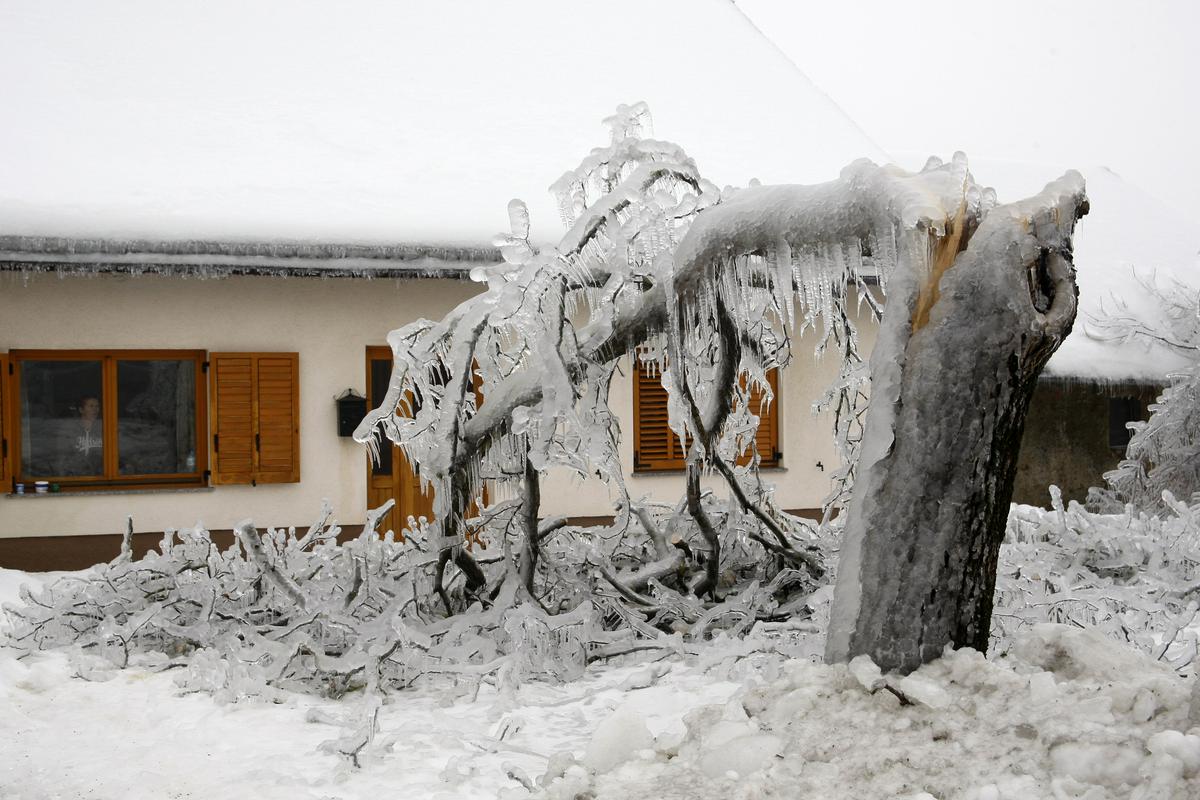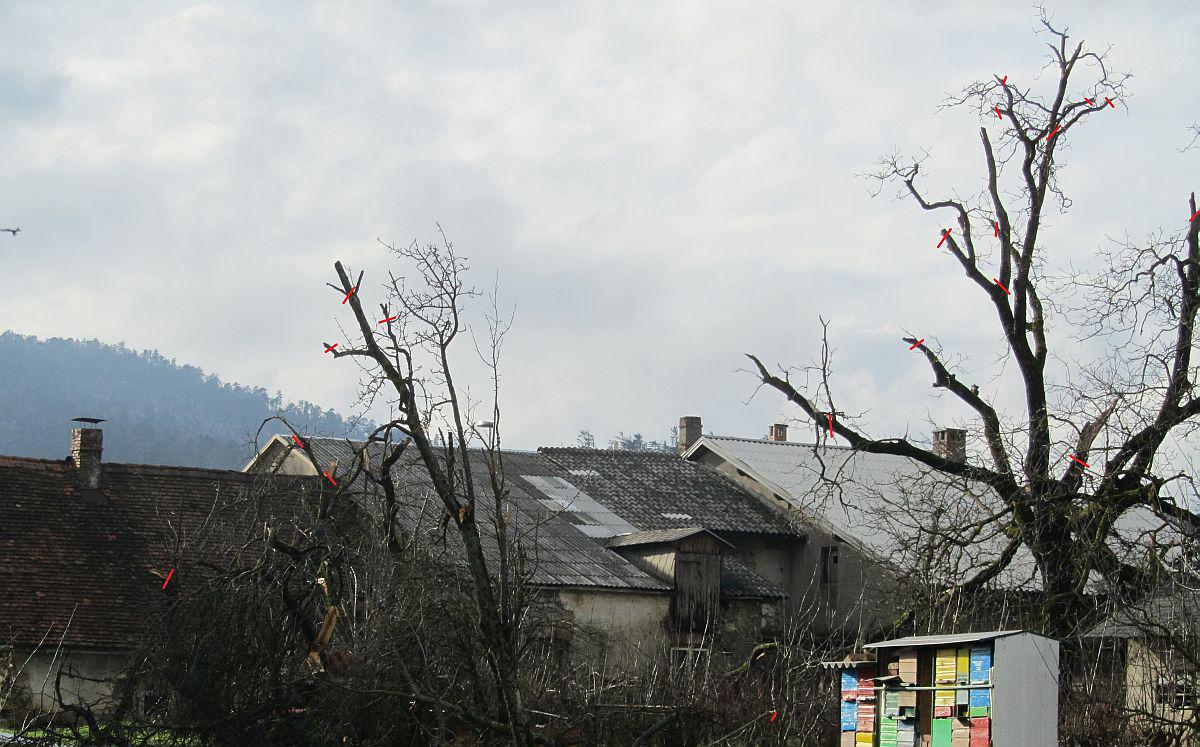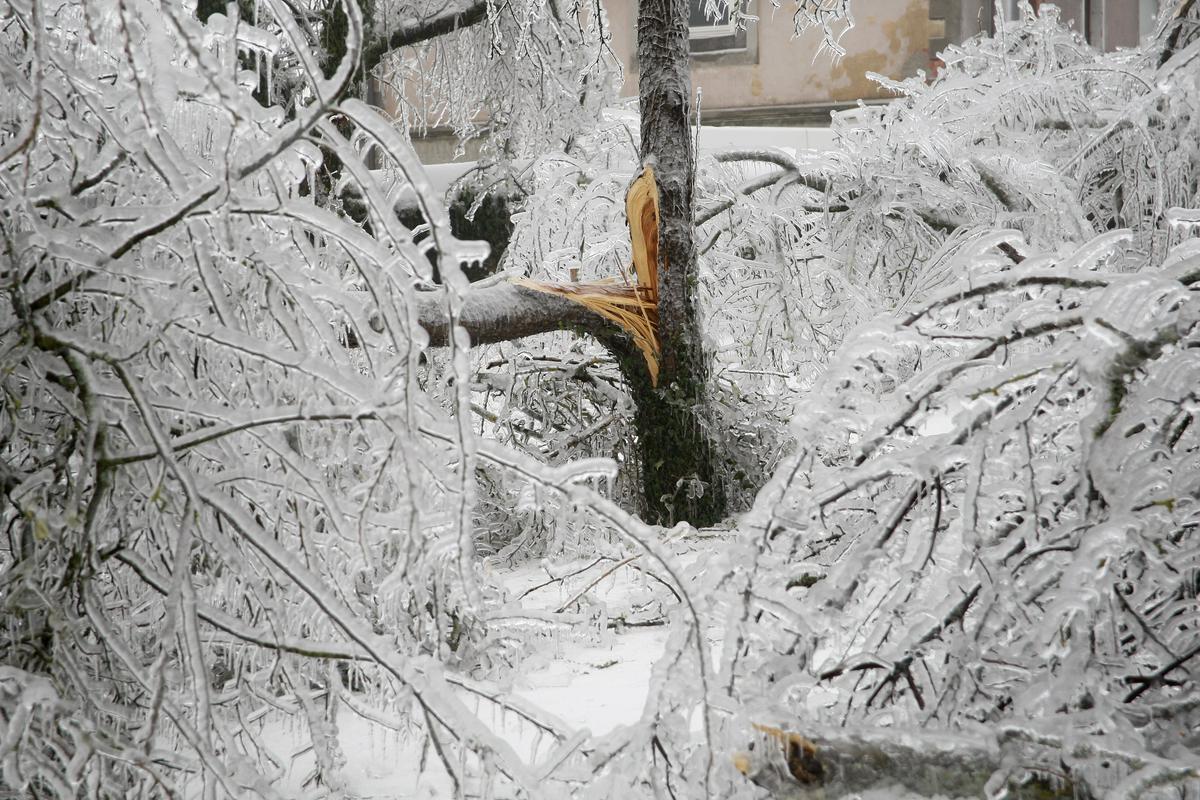


Ivan Kodrič, a consultant at the Nova Gorica branch of the Agriculture and Forestry Chamber of Slovenia (KGZS), explained in an interview for MMC that the damage after the recent ice storm was still being estimated. Yet, it is already clear that in intensive orchards and home gardens, where smaller fruit trees grow, the damage isn’t severe.
However, fruit trees of higher growth are problematic, stresses Kodrič. Only some branches and branchlets broke off on smaller trees as well as those in orchards, and this can easily be treated. “We only need to do a basic cut, a little lower than usual, and spray it,” advises Kodrič, adding a reminder for fruit growers: “It’s imperative that the fences be mended first, or else game will have access to the orchards, which will increase the damage.”
Self-standing trees with tall trunks most affected
Sleet has caused much more substantial damage to self-standing fruit trees (especially apple trees, pears trees, plum trees and walnut trees) which do not grow in orchards. “In the region around Postojna, there are a lot of cases where branches broke off on such trees, some tree tops broke, too, and there have been some, though few, trees that had been uprooted and fell,” explains Kodrič, adding that a later cut, right before the buds start sprouting, is an even better measure, since juices will have started flowing through the trees by then.
Fruit growers should use a special paste or a copper concoction to treat the wounds, advises Kodrič. “If fruit growers apply this to the wounds, it should suffice. However, if there are multiple, smaller wounds, they should be sprayed with copper when buds are about to burst (a stage called mouse ear) to disinfect smaller wounds, just in case,” argues Kodrič.
“In the case of branches, leave the stumps, some 20-30 cm long – if that’s possible, if they didn’t break by the trunk –, so that new shoots can grow from them and the tree can regenerate. If the branch broke somewhere in the middle, there’s no need to cut off the entire branch,” notes Kodrič, reminding fruit growers that trees need to be inspected before every pruning anyways, and vertical branches need to be trimmed.
First workshops on tree pruning starting next week
KGZS has already prepared rough estimates of the damage to fruit trees. Kodrič is not yet acquainted with them, but he stresses it’s difficult to generalize, since some trees may look completely battered, whereas damage on other trees could become visible later on. The chamber has scheduled a workshop for next Tuesday, as well as a practical demonstration of how to prune fruit trees, in the village of Sajevče (in the municipality of Postojna).
No general guidelines
Boštjan Godec from the Agricultural Institute of Slovenia says that the recipe for saving damaged fruit trees is “simple”: “To prun the tree in an expert manner.” He agrees that trees with tall trunks, up to several metres high, have been most affected, while there is less damage in intensive orchards, where owners take care that the trees stay of lower growth and are supported. However, he warns that each tree is different, which is why he can’t offer any general guidelines.
Parallels with the 1899 ice storm
Taking into consideration the similarities between the recent ice storm and the one that afflicted Slovenian territory over 100 year ago (15 December 1899), Godec decided to research how our ancestors had dealt with the problem – especially since individual trees with tall trunks prevailed at the time, the same kind that has been most damaged during this catastrophe.
He found that their solutions were similar: to cut the branches a little lower from the break point, to apply resin to the wound, to straighten the branches and the trees and support them. “Many pieces of advice suggested not cutting down everything, since the tree can be preserved by following certain measures,” Godec points out and adds that similar advice is still given today.


































































